This article is part of our insurance innovators interview series.
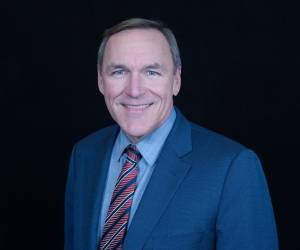 Stanley A. Galanski, President and CEO, The Navigators Group, Inc.
Stanley A. Galanski, President and CEO, The Navigators Group, Inc. Mark E. Watson III, President and Chief Executive Officer, Argo Group International Holdings, Ltd.
Mark E. Watson III, President and Chief Executive Officer, Argo Group International Holdings, Ltd.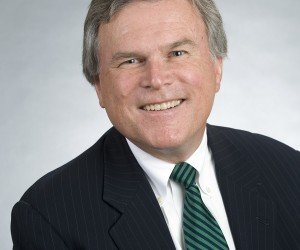 Kevin H. Kelley, Chief Executive Officer, Ironshore Inc.
Kevin H. Kelley, Chief Executive Officer, Ironshore Inc. John Wurzler, President, OneBeacon Technology Insurance
John Wurzler, President, OneBeacon Technology Insurance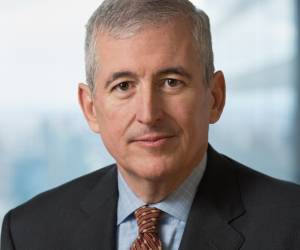 Alan B. Colberg, President and Chief Executive Officer, Assurant, Inc.
Alan B. Colberg, President and Chief Executive Officer, Assurant, Inc. Manny Rios, President and CEO, American Modern Insurance Group
Manny Rios, President and CEO, American Modern Insurance Group Dave Pratt, General Manager, Usage-Based Insurance, Progressive
Dave Pratt, General Manager, Usage-Based Insurance, Progressive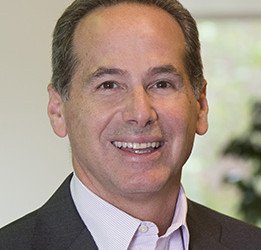 Berto Sciolla, EVP and Manager of North American Treaty Reinsurance,Gen Re
Berto Sciolla, EVP and Manager of North American Treaty Reinsurance,Gen Re Greg Hendrick, Chief Executive, Insurance, XL Catlin
Greg Hendrick, Chief Executive, Insurance, XL Catlin Anand Rao, Principal, PwC U.S. Advisory Practice
Anand Rao, Principal, PwC U.S. Advisory Practice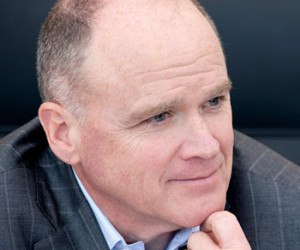 Mike McGavick, Chief Executive Officer, XL Catlin
Mike McGavick, Chief Executive Officer, XL Catlin David M. Lightfoot, Managing Director, Head of GC Analytics – Americas, Guy Carpenter
David M. Lightfoot, Managing Director, Head of GC Analytics – Americas, Guy Carpenter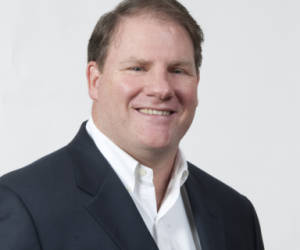 Conan Ward, Chief Executive Officer, Hamilton USA
Conan Ward, Chief Executive Officer, Hamilton USA Ming Lee, Chief Executive Officer, AIR Worldwide
Ming Lee, Chief Executive Officer, AIR Worldwide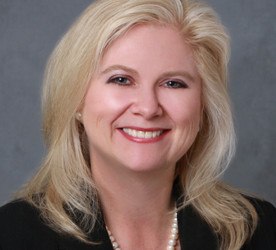 Laura Hay, National Insurance Sector Leader, KPMG LLP
Laura Hay, National Insurance Sector Leader, KPMG LLP John Lupica, Vice Chairman, ACE Group; Chairman, Insurance–North America
John Lupica, Vice Chairman, ACE Group; Chairman, Insurance–North America
 Kevin H. Kelley, Chief Executive Officer, Ironshore Inc.
Kevin H. Kelley, Chief Executive Officer, Ironshore Inc.Q1: In your view, what has been the greatest innovation in the P/C insurance industry in recent years? Explain.
Kelley (Ironshore): The evolution of new products and services within the insurance sector is ongoing as insurance companies strive to develop innovative solutions that respond to market demand. One of the signature coverage innovations over the past 20-25 years has been employment practices liability insurance.
EPL standalone coverage protects company directors, officers and employees against claims of alleged wrongful employment practices. While an essential cover for virtually any company, the market for the product has taken time to mature. One reason for the gradual evolution of market acceptance of EPL coverage is that the product required identification and education of risk given legal developments and changes in the law.
The EPL product is not just a risk transfer structure but rather embodies a service component. Insurers had to educate the buyers of the product, enabling them to identify myriad aspects of the underlying risk and fully understand best practices to help mitigate exposure.
Q2: Describe the greatest innovation at your company during your tenure. (It could be a product, process or service.) How did it come about? (Feel free to describe more than one.)
Kelley (Ironshore): Innovation is the foundation of the Ironshore culture. Helping our clients adjust to change is integral in how we evolve as a company, providing coverage solutions throughout Ironshore’s global distribution platform.
We view change as very positive. Change triggers product enhancement and allows us to engage in new ways with our clients, brokers and policyholders.
Profound progress during my tenure at Ironshore has been that the management and employees throughout the organization enthusiastically embrace innovation. It’s in our corporate DNA, so to speak. New product design is embedded in our mindset and drives how we view and respond to the market.
(Editor’s Note: Among the recent examples of innovative product offerings introduced by Ironshore is standalone crisis coverage for construction risks and an endorsement on excess policies of health care facilities for emerging infectious disease business interruption coverage.)
Q3: In your view, what innovation or innovator outside the insurance industry has had or is having the greatest impact on the P/C insurance industry?
Kelley (Ironshore): The arrival of alternative capital is having significant impact in the reinsurance marketplace.
Kevin Kelley, Ironshore
Q4: Describe one or more ways in which your company encourages innovation. (Feel free to describe any elements of the culture or process.)
Kelley (Ironshore): At Ironshore, we approach product innovation in a systematic manner. Management meets at least once a month, sometimes more often, to update one another on trends within their specialty business lines and to elicit input from our various profit centers. Ironshore’s process for encouraging innovation leads to a culture of collaboration.
Visiting distributing channels throughout our global platform sheds light on marketplace developments and enables us to recognize exposures clients face within an ever-changing insurance landscape. Innovation allows us to help clients adjust to change through a sophisticated approach to introduce and refine products that clients want to purchase.
Q5: What is the biggest obstacle to innovation within the insurance industry? Explain. What is your company doing (or what can the industry do) to overcome this obstacle?
Kelley (Ironshore): One of the significant obstacles is industry hesitancy to adopt a new product or service for discretionary insurance coverage. There is often a lag between the time a product is launched and the time when the coverage generates significant adoption to earn market share. Market buyers of an innovative product introduction tend to wait to see how the product evolves in terms of meeting market demand in a designated specialty business line. At Ironshore, we believe that offering support services that can serve to educate and inform the market on product attributes can be invaluable for achieving timely product success.
Q6: Do you believe the next innovation to impact the P/C insurance industry will come from inside the industry or from an external innovator? Why?
Kelley (Ironshore): Coverage solutions for emerging cyber risk will likely follow a similar path as the employment practices liability product. Identification of the inherent exposures of cyber risk is in its early stages, with risk transfer solutions still evolving. Clear recognition of underlying exposures and even clearer understanding of product design and market capacity will be essential. Adoption of the EPL products underwent an analogous trajectory for providing the market with protective cover.
The ideal outcome for addressing cyber risk exposure will involve a collaboration—essentially, identification of risk transfer solutions from within the industry and mitigation support services evolving from outside the industry, which will most likely emerge from the technology sector.
Q7: Describe your role in leading innovation at your company.
Kelley (Ironshore): Dedication and commitment to innovation comprises the ethos of my job at Ironshore. My role is to listen to the market, motivate new thinking and build a culture to innovate.
Q8: What is the best book you have read about innovation? The best course or seminar you have attended? What was a key takeaway from the book or education session?
Kelley (Ironshore): Innovation is a constant, best understood through practical life experiences. I have been in the forefront of innovation for many years, focusing on product development and adaptation within diverse sectors of the marketplace.
Business books and study on the culture of innovation are written or discussed at specific moments in time. Learning about innovation is an ongoing, engaging and collaborative exercise shared among employees, clients and distribution partners.
Q9: It is often said that tolerance for failure is one of the key cultural elements of a company in which innovation can thrive. Describe a failed initiative at your company and what you learned about innovation in the process.
Kelley (Ironshore): Innovation is not a qualifier for success. A company has to be prepared to fail in order to learn from mistakes. A corporate culture of innovation requires both resilience and persistence. The commitment to innovate cannot lose momentum when an idea becomes derailed. Absence of innovation, however, will most likely result in failure over the longer term.
Q10: Have you ever collaborated with market competitors to move an innovation forward? If so, why did collaboration make sense in this situation?
Kelley (Ironshore): At Ironshore, we collaborate with other risk-takers in the form of reinsurance. We believe in the necessity of working with reinsurance entities through a range of favorable and far-reaching risk management structures to deliver meaningful, vital market capacity.
(Editor’s Note: In early 2009, Ironshore announced that it would team up with C.V. Starr & Co. to launch Iron-Starr Excess Agency Ltd., a specialty lines insurance and reinsurance managing general agency, offering catastrophic excess casualty capacity for Fortune 2000 companies. In July 2014, Hamilton Re signed on as another subscribing insurer, increasing the amount of capacity Iron-Starr can offer for a full suite of casualty, financial lines and health care products.)
Q11: Outside of providing risk transfer solutions, what are the most likely areas in which insurers can be innovators? Can P/C insurers disrupt other industries or provide noninsurance solutions by applying innovations developed through their core skills in underwriting and risk analysis, settlement negotiations, catastrophe modeling, environmental science or other areas?
Kelley (Ironshore): Insurance companies can provide the market with services surrounding coverage to help clients identify and mitigate evolving market risks.
Ironshore builds relationships with sector-specific experts—financial advisors, consultants and industry professionals that can offer an additional level of insight regarding identification of risk exposure and approaches for managing potential financial or reputational impact. Risk financing services, engineering evaluations, environmental science assessments that enhance a new product offering are just a few examples.
Assisting our clients and distribution partners to better identify and manage inherent risk in the exposure distinguishes our approach for providing specialty sector risk transfer solutions.
Read more Innovation Insights by Person:
 Stanley A. Galanski, President and CEO, The Navigators Group, Inc.
Stanley A. Galanski, President and CEO, The Navigators Group, Inc. Mark E. Watson III, President and Chief Executive Officer, Argo Group International Holdings, Ltd.
Mark E. Watson III, President and Chief Executive Officer, Argo Group International Holdings, Ltd. Kevin H. Kelley, Chief Executive Officer, Ironshore Inc.
Kevin H. Kelley, Chief Executive Officer, Ironshore Inc. John Wurzler, President, OneBeacon Technology Insurance
John Wurzler, President, OneBeacon Technology Insurance Alan B. Colberg, President and Chief Executive Officer, Assurant, Inc.
Alan B. Colberg, President and Chief Executive Officer, Assurant, Inc. Manny Rios, President and CEO, American Modern Insurance Group
Manny Rios, President and CEO, American Modern Insurance Group Dave Pratt, General Manager, Usage-Based Insurance, Progressive
Dave Pratt, General Manager, Usage-Based Insurance, Progressive Berto Sciolla, EVP and Manager of North American Treaty Reinsurance,Gen Re
Berto Sciolla, EVP and Manager of North American Treaty Reinsurance,Gen Re Greg Hendrick, Chief Executive, Insurance, XL Catlin
Greg Hendrick, Chief Executive, Insurance, XL Catlin Anand Rao, Principal, PwC U.S. Advisory Practice
Anand Rao, Principal, PwC U.S. Advisory Practice Mike McGavick, Chief Executive Officer, XL Catlin
Mike McGavick, Chief Executive Officer, XL Catlin David M. Lightfoot, Managing Director, Head of GC Analytics – Americas, Guy Carpenter
David M. Lightfoot, Managing Director, Head of GC Analytics – Americas, Guy Carpenter Conan Ward, Chief Executive Officer, Hamilton USA
Conan Ward, Chief Executive Officer, Hamilton USA Ming Lee, Chief Executive Officer, AIR Worldwide
Ming Lee, Chief Executive Officer, AIR Worldwide Laura Hay, National Insurance Sector Leader, KPMG LLP
Laura Hay, National Insurance Sector Leader, KPMG LLP John Lupica, Vice Chairman, ACE Group; Chairman, Insurance–North America
John Lupica, Vice Chairman, ACE Group; Chairman, Insurance–North America
Read other innovator’s response by question:
- Q1: The greatest innovation in the P/C insurance industry
- Q2: Describe the greatest innovation at your company
- Q3: Innovation or innovator outside the insurance industry
- Q4: How your company encourages innovation
- Q5: The biggest obstacle to innovation within the insurance industry?
- Q6: The next innovation to impact the P/C insurance industry
- Q7: Your role in leading innovation.
- Q8: Best book you have read about innovation
- Q9: Describe a failed initiative at your company
- Q10: Collaborating with market competitors
- Q11: Can P/C insurers disrupt other industries?
Get all 16 interview neatly packaged in a single PDF download. Explore ideas by personality and by question. More than 60 pages of content.





















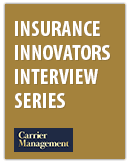
 Progressive: Policies Grow Faster Than Workforce
Progressive: Policies Grow Faster Than Workforce  Contractors Insurance Alert: Construction Defect Lawsuits Rising
Contractors Insurance Alert: Construction Defect Lawsuits Rising  The Workplace Is Changing; So Are the Risks for Employment Discrimination Claims
The Workplace Is Changing; So Are the Risks for Employment Discrimination Claims  The Future of Premium Audits: Using AI Assistants to Streamline Data Collection
The Future of Premium Audits: Using AI Assistants to Streamline Data Collection 







